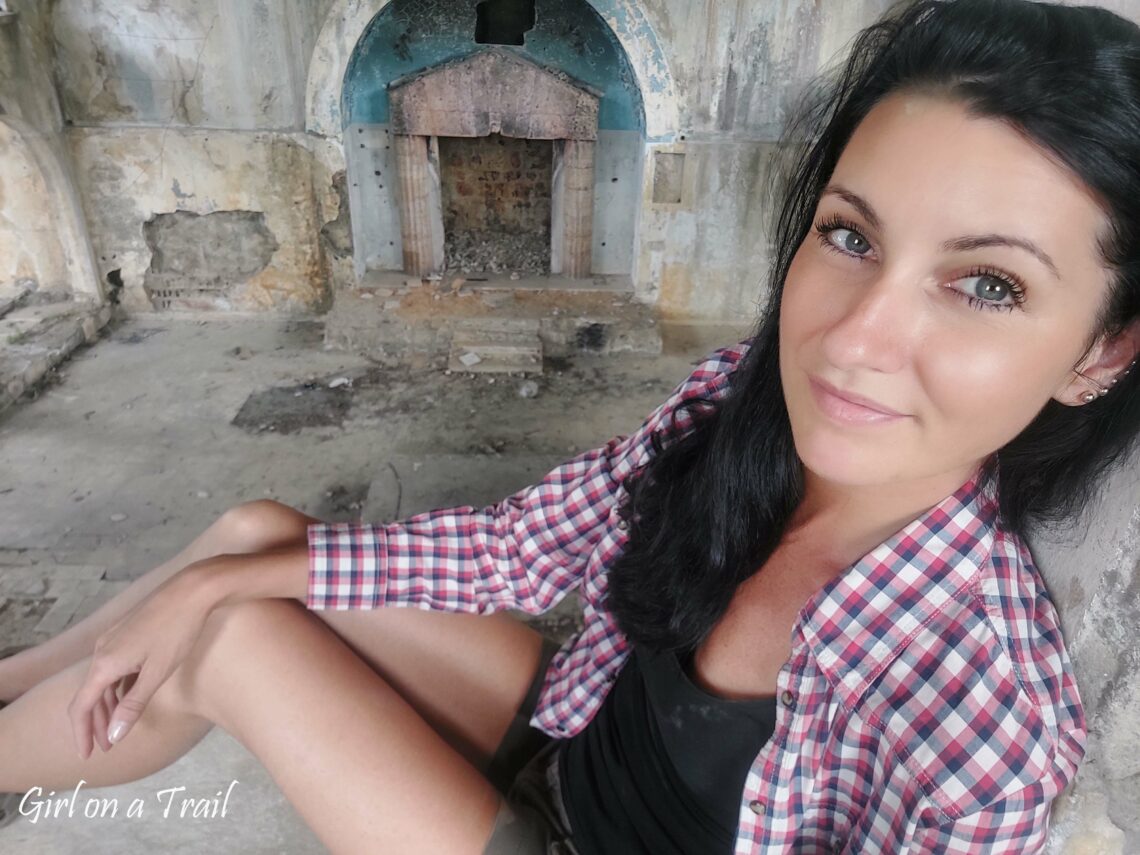
Urbex – Lebanon, Girl off the trail…
Urbex (urban exploration) is a way of exploring places that are abandoned and often inaccessible. I must admit that for some time this way of sightseeing has dominated my travels. Why urbex? I could find many reasons, but what excites me the most is discovering the history of inaccessible places piece by piece and the adrenaline rush associated with it. Abandoned places are unique and there’s an exceptional beauty in their slow decay. What’s more, the time causes their constant change, which makes each visit a different experience.
These are the reasons why I decided to share my discoveries with you.
I start the series with Lebanon – my last trip. Lebanon is a unique country for me, while the urbex there has an additional dimension.
Abandoned buildings, religious and entertainment facilities show the turbulent history of Lebanon, as well as reflect its current dramatic economic situation.
The largest number of such places, mainly due to urban development, can be found in Beirut.

The Egg
The most characteristic abandoned building in Beirut is the so-called the Egg, located in the very center of the city, next to the Martyrs’ Square and the Mohammed Amin Mosque. The Egg was to be part of a larger shopping complex. Its construction began in 1965, but was not completed due to the outbreak of the Civil War.


During the Civil War, the building stood on the border of the eastern Muslim and western Christian parts. Numerous bullet marks, which can be seen nowadays are the remnants of the bloody fights.

For many years, the Egg remained unused, until October 2019, when a series of protests broke out in Lebanon, sparked by general public discontent related to the ubiquitous corruption in the government and the progressing economic crisis. At that time, the cinema building was used to organize rallies and lectures.

Le Grand Teatre
Near the Egg there’s another symbol of heavy fighting during the Civil War – the Grand Theater. It was opened in 1929 and hosted numerous performances and film productions on its stage over the years. From 1960, it served only as a cinema and later during the Lebanese Civil War, it was used as a hospital. Unfortunately, being right on the border of the demarcation line, it was significantly damaged during the fighting. For that reason, it was abandoned before the end of the Civil War. It remains undeveloped to this day. Due to the fence, this place is currently not open to the public.

Saint George Hotel
It was built in 1920. It’s a symbol of Lebanon’s golden times. The hotel gained popularity due to its prime location in the center of Beirut, right on the Mediterranean coast, and its luxurious design. In the 70s, it was visited by such stars as Brigitte Bardot, Marlon Brando and Elizabeth Taylor. Among its guests were also heads of state and spies from both sides of the Cold War. Unfortunately, during the Lebanese Civil War, it shared the fate of many other buildings in the area. It was closed at its beginning, i.e. in 1975. In the first years of the war, it took part in the so-called The Battle of Hotels, in which opposition forces fought to gain control over strategically located facilities. Then it was occupied by the Syrian army until 1990. The planned reconstruction of the hotel after the war didn’t materialize due to a court dispute between the owner of the hotel and the public-private organization Solidere, planning to take over real estate in Beirut, and then led by Prime Minister Rafic Hariri. Ironically, in 2005, Hariri was murdered in a terrorist attack outside the Saint George Hotel. A bomb detonated just before its entrance caused additional damage to the façade. To this day, the hotel stands desolated, only the swimming pool and the restaurant have been made available for public use.

Bechara El Khoury Palace
While being in the Zokak el-Blat district, it is worth visiting the Bechara El Khoury Palace. It was built around 1870 when Lebanon was within the borders of the Ottoman Empire. Despite the passage of time, the palace still makes an amazing impression. Decorations on the ceilings, soaring vaults and columns give an image of its past glory.

The remains of the blue ceiling and the blue façade contrasting with the lush greenery also look interesting. The progressing degradation of this place gives it a unique character, unfortunately, you can see with the naked eye that its days are numbered.

Despite its poor technical condition, the palace is not completely abandoned. There’s a carpentry workshop on the ground floor. To get to the upper floor, you just need to smile nicely to its owner. This is why I love Lebanon. While in Europe the access to such a place would be subject to a number of regulations of the monument conservator, occupational health and safety or construction inspection, while in Lebanon everything is possible. No one sees a problem with the functioning of a workshop in a ruined building, not to mention the possibility of visiting it.


Pigeons’ Rocks – Raouche
The last place in Beirut I visited by accident, being in the area of Pigeon Rocks. Watching the amazing sunset, I saw an abandoned restaurant on the other side. Although the restaurant itself is not an interesting place to explore, itturned out to be an excellent vantage point on the Pigeons’ Rocks.


Safar
An interesting building, although currently unavailable to the public, is the Safar Grand Hotel in Safar. It was built in 1892. Inside, there was the first casino in Lebanon, a cinema, a nightclub and a bar. The hotel hosted the richest guests from the Arab world.

There’s also an abandoned railway station nearby, built at the same time. Unfortunately, the building is in a rather dilapidated condition.


Synagogue in Bhamodoun
An amazing and unique religious building in Lebanon is the abandoned synagogue in the city of Bhamdoun. It was built in 1922 and was one of the four large synagogues in Lebanon. It is also called the Last Temple belonging to the Jewish community.


It was built for the needs of Jews who, before the outbreak of the Civil War, spent holidays there. The synagogue was closed in 1976 when the Syrian army entered Lebanon and reached the borders of Bhamdoun.


Near the Synagogue, you can see Villa Donna Maria, built in 1909. Unfortunately, during my visit, it turned out that the building is under reconstruction.


Hotel Al Kassouf
An interesting abandoned hotel can also be seen in the mountain town of Dhour El Choueir, located about 30 km west of Beirut. The imposing building, built in 1930, once hosted the most distinguished guests, including the Lebanese president.


In 1935, the first beauty contest “Miss Lebanon” was held here. Unfortunately, it was badly damaged during the Civil War.


Aquarium in Batorun
Driving north from Beirut, in the town of Batorun, there’s an abandoned building of an unfinished aquarium. Construction began in 1968, but was stopped after a few years. I don’t think I need to add what event prevented further work…

Although access to the building is prohibited, it does not mean that it’s not possible to get into? The lack of any fence allows free entry.

The walls of the building are covered with various murals. A circular staircase leads to the terrace, which offers an interesting view of the city and the beach. From the top of the aquarium, you can also see the unfinished planetarium building. The planetarium is currently located next to a private property, therefore its exploration is not possible.


Right next to the aquarium, there’s a complex of an abandoned educational center with a hotel section. The building is in excellent condition and doesn’t look like completely abandoned. However, I checked all the floors and I can assure you that there are no signs of any life there ?


I’m convinced that Lebanon is full of amazing abandoned places that have not yet been discovered. Urbex in this country allows you to discover its difficult history, and abandoned buildings are often a symbol of the dramatic experiences of the Lebanese people. These places are something tangible and allow you to see history with your own eyes, in my opinion they speak better to the imagination than the best museums.
Do you like this post? Find out more here. 🙂





2 Comments
Joe Vonn Graves
Very well written, beautiful explanation’s and descriptions of each local. Thank you.
Gosia
Thank you too 🙂